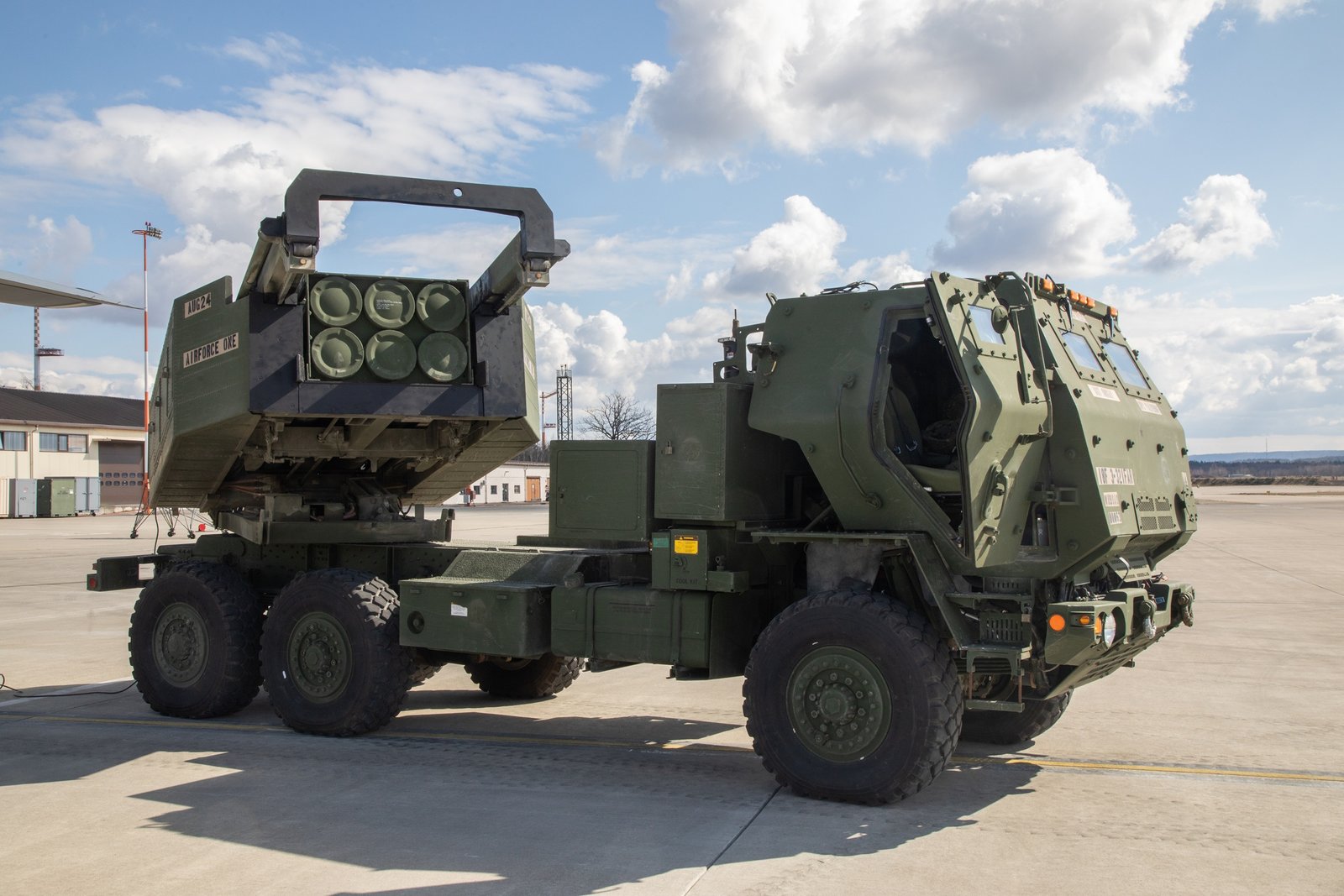
U.S. Missile Production Surges as Lockheed Ramps up for Future Wars
Pentagon’s No.1 weapons supplier Lockheed Martinis rapidly expanding production of some of the most critical missile and launcher systems in the U.S. arsenal — from PAC-3 and GMLRS to HIMARS, Javelin, PrSM, and JASSM/LRASM — as demand for precision strike capabilities grows amid rising global security challenges.
The company said the scaling effort reflects both the accelerating requirements of the U.S. military and the growing demand from allies seeking to strengthen deterrence. It involves major new investments in manufacturing capacity, automation, and supply chain resiliency — all aimed at delivering more advanced weapons faster and at greater scale.
“The ramp up is real, and so is our response,” the company said. “We are scaling production across key missile and launcher systems — expanding PAC-3 MSE and GMLRS, doubling HIMARS output and accelerating PrSM, Javelin, and JASSM/LRASM — to support U.S. and allied deterrence.”
The PAC-3 Missile Segment Enhancement (MSE) — a cornerstone of U.S. and allied air and missile defense — is seeing record output as Lockheed Martin responds to urgent operational demand. Widely deployed across NATO and partner nations, the interceptor has demonstrated its effectiveness against a range of threats, driving a surge in orders from both domestic and foreign customers.
Lockheed Martin has delivered more than 2,500 PAC-3 MSEs to date and expects to produce more than 600 units in 2025 — the highest annual output in the program’s history. Production is already ramping up toward 650 missiles per year, with the company exploring additional investments to push capacity beyond that level.
“We recognize the critical need for PAC-3 MSE from both the United States and our international partner nations, and we’re working closely with the U.S. Army to increase our production rate to meet the worldwide demand,” the company said.
Lockheed Martin’s Guided Multiple Launch Rocket System (GMLRS) — the workhorse of long-range rocket artillery — is also undergoing a dramatic expansion. The company has already delivered more than 75,000 GMLRS rockets worldwide and is finalizing a production ramp to 14,000 rockets per year.
The system, prized for its precision, range, and reliability, is a staple of U.S. Army and allied artillery units and has seen extensive use in high-intensity operations, where rapid resupply and sustained fire capability are essential.
Production of the High Mobility Artillery Rocket System (HIMARS), one of the most in-demand platforms in U.S. and allied inventories, has doubled in response to growing global requirements. The annual production capacity increased from 48 to 96 launchers in 2024, ahead of schedule.
The expansion is backed by $2.8 billion in U.S. Army contracts and includes substantial upgrades to tooling and supply chain networks. The system’s proven battlefield performance — including its effectiveness in delivering precision fires from long range — has made it a priority for U.S. and partner forces.
Lockheed Martin is also rapidly advancing production of the Precision Strike Missile (PrSM), the next-generation long-range strike weapon for the U.S. Army. The Increment 1 version is already delivering Early Operational Capability missiles, and production is scaling toward a capacity of 400 per year under an Indefinite Delivery Indefinite Quantity (IDIQ) contract awarded in March 2025.
The company said it is focused on building surge capacity for PrSM, a capability seen as critical to countering peer adversaries in future conflict scenarios.
The Javelin anti-tank missile — jointly produced by Lockheed Martin and Raytheon — is also undergoing a production expansion to meet strong global demand. Currently capable of producing 2,400 missiles per year, Lockheed Martin plans to increase capacity to 3,960 annually by late 2026.
The program is modernizing its production line and improving efficiency as part of the expansion. “This expansion in production capacity is challenging our teams to innovate in order to meet the increasing worldwide demand for the Javelin weapon system,” the company said.
Lockheed Martin’s air-launched precision strike systems — the Joint Air-to-Surface Standoff Missile (JASSM) and the Long Range Anti-Ship Missile (LRASM) — are also scaling to meet U.S. Air Force and Navy requirements. In 2024, the company received a $3.2 billion Undefinitized Contract Action to expand production capacity for both missile types. Additionally, a Phase III Facilitization contract awarded in August will further enhance manufacturing capabilities.
These systems provide the U.S. and its allies with deep-strike and maritime strike capabilities designed to penetrate advanced air defenses and neutralize high-value targets at long ranges.
Lockheed Martin says its production surge is about more than meeting current demand — it’s about shaping the defense industrial base for future conflicts. The company is investing heavily in automation, advanced manufacturing, and resilient supply chains to ensure rapid scalability and sustained output over the long term.
“Lockheed Martin is delivering at the speed of relevance — backed by the strength of American manufacturing and a resilient defense industrial base,” the company said. “We built the arsenal and we’re continuing to innovate for current and future warfare needs.”
The expansion is being closely watched in Washington and among allied governments as defense planners prepare for a more complex global security environment. As threats evolve — from ballistic and cruise missiles to hypersonic weapons and advanced integrated air defense systems — the demand for rapid, precision, and long-range strike capabilities is only expected to grow.
The surge in production also reflects broader shifts in U.S. defense strategy under President Donald Trump’s administration, which has emphasized industrial readiness, deterrence, and rapid fielding of proven capabilities. With rising geopolitical tensions and potential flashpoints from Eastern Europe to the Indo-Pacific, defense officials have called for increased munitions production to ensure both U.S. forces and allies are equipped for sustained operations.
For Lockheed Martin, the scaling effort represents both a response to immediate operational needs and a long-term investment in strategic deterrence. By doubling production on key systems, increasing output across the board, and building new capacity for emerging technologies, the company is positioning itself — and the U.S. defense industrial base — to deliver the next generation of precision strike capabilities at scale.


